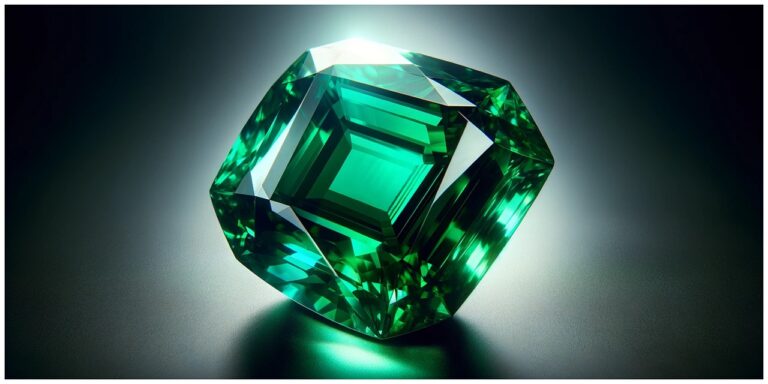Diamonds have long captivated humanity with their brilliance and durability, symbolising eternal love and status.
However, one of the most fascinating and lesser-known aspects of these precious stones is their potential origin from outer space, leading to the creation of what are known as extraterrestrial diamonds or cosmic diamonds.
These cosmic gems, which may include certain carbonado diamonds and other microscopic diamonds embedded in meteorites, carry within them the mysteries of the universe.
The Discovery of Extraterrestrial Diamonds
The idea that diamonds can form in space may sound like science fiction, but it is grounded in scientific discoveries. Extraterrestrial diamonds have been found embedded in meteorites, which are fragments of celestial bodies that have fallen to Earth. These diamonds are often microscopic and require sophisticated equipment to detect and analyse.
One of the significant discoveries of extraterrestrial diamonds occurred in 1987 when researchers found tiny diamond crystals in meteorites recovered from Antarctica. These meteorites, known as the Murchison and Allende meteorites, contained microscopic diamonds that differed markedly from those formed on Earth.
This discovery opened up new avenues of research and posed intriguing questions about the formation and history of these cosmic gems.
Before this, the concept of extraterrestrial diamonds was largely theoretical. The idea gained traction with the development of advanced analytical techniques and improved understanding of stellar phenomena. Early theoretical work, including research from the 1950s, proposed that diamonds could form in the extreme environments of space, setting the stage for later discoveries.
Formation of Extraterrestrial Diamonds
The formation of extraterrestrial diamonds is a complex process that involves extreme conditions. There are two primary theories about how these diamonds form:
Supernova Explosions: One prevailing theory suggests that extraterrestrial diamonds may form during supernova explosions. A supernova is a powerful and luminous explosion that occurs when a massive star reaches the end of its life cycle. The intense heat and pressure generated during a supernova can cause carbon atoms to crystallise into diamond structures. These diamonds are then dispersed into space as part of the supernova remnants.
Dense Carbon-Rich Environments: Another theory proposes that extraterrestrial diamonds could form in dense, carbon-rich environments surrounding certain stars. In these environments, carbon atoms can slowly accumulate and crystallise over time, forming diamonds. These diamonds can be incorporated into meteorites and other celestial bodies, eventually making their way to Earth.
Characteristics of Extraterrestrial Diamonds
Extraterrestrial diamonds, or carbonado diamonds, have unique characteristics that distinguish them from their terrestrial counterparts. Carbonado diamonds, a type of extraterrestrial diamond, are typically black or dark grey with a porous, polycrystalline structure. Other extraterrestrial diamonds found in meteorites are often microscopic and may appear colourless.
The physical properties of carbonado diamonds also differ. They are often harder and more resilient than traditional diamonds, making them valuable for industrial applications. Additionally, the isotopic composition of carbon in extraterrestrial diamonds can provide clues about their origin and the conditions under which they formed.
In addition to their cosmic origins, diamonds found in meteorites can also exhibit varying colours, much like those formed on Earth. These colours provide further insights into their formation and composition. For a deeper understanding of how diamond colour affects value, you can explore.
Scientific Significance
The study of extraterrestrial diamonds has significant scientific implications. By analysing these diamonds, researchers can gain insights into the processes that occur in space and the history of our solar system. The isotopic composition of carbon in extraterrestrial diamonds, along with other analytical techniques, can reveal valuable information about the types of stars and celestial events that produced them.
Furthermore, the presence of extraterrestrial diamonds in meteorites suggests that diamond formation is not limited to Earth but is a widespread phenomenon in the universe. This realisation has broadened our understanding of the conditions necessary for diamond formation and the distribution of diamonds in the cosmos.
Cultural and Philosophical Implications
The existence of extraterrestrial diamonds also has profound cultural and philosophical implications. Diamonds have always been symbols of luxury, rarity, and timeless beauty. The idea that some diamonds originated in the depths of space adds an extra layer of wonder and mystique to these already captivating gems.
The concept of diamonds forming in supernova explosions or in the carbon-rich environments of other stars challenges our traditional notions of value and origin. It reminds us that the materials we treasure on Earth are part of a much larger and more ancient cosmic story. Each extraterrestrial diamond carries within it the history of the universe, connecting us to events that occurred billions of years ago and light-years away.
Beyond their scientific intrigue, diamonds hold profound cultural significance across various societies. This cultural value is not just limited to Earth but also extends to the idea of cosmic diamonds. To learn more about how diamonds are revered and symbolised around the world, you can explore.
Did You Know?
| Feature | Extraterrestrial Diamonds | Terrestrial Diamonds |
| Origin | Formed in space, possibly from supernova explosions or carbon-rich environments in stars. | Formed deep within the Earth’s mantle under extreme pressure and temperature. |
| Appearance | Often black or dark grey, porous, and polycrystalline (e.g., carbonado diamonds). | Typically clear and coloured, with a single-crystal structure. |
| Composition | Unique isotopic compositions, offering clues about their cosmic origins. | Composed mostly of carbon, with trace elements affecting colour and clarity. |
| Hardness and Resilience | Often harder and more resilient, valuable for industrial applications. | Hard and durable, highly prized for jewellery and cutting tools. |
| Cultural Significance | Connects us to the cosmos, adding an element of mystique and wonder. | Symbolises luxury, rarity and timeless beauty, often linked to love and status. |
Recent Research and Findings
Recent advancements in the study of extraterrestrial diamonds have greatly expanded our understanding of these cosmic gems. Technological innovations, such as synchrotron radiation and high-resolution mass spectrometry, have allowed scientists to analyse these diamonds with remarkable precision.
These techniques have revealed crucial details about their isotopic compositions and formation processes. For instance, synchrotron X-ray diffraction has illuminated the polycrystalline nature of carbonado diamonds, while mass spectrometry has identified unique isotopic signatures, providing insights into their cosmic origins.
Additionally, recent discoveries from meteorites, including those from Antarctica, and cosmic dust samples have introduced new types of diamonds, such as novel cosmic diamond classes and nanodiamonds. These findings support theories about diamond formation in diverse cosmic environments and enhance our understanding of their distribution across the universe.
The implications of these discoveries are profound, affecting our knowledge of stellar evolution and cosmochemistry. Research on extraterrestrial diamonds sheds light on the chemical processes that shaped the early solar system and the formation of planetary bodies, refining our models of stellar evolution.
International collaborations and space missions, like NASA’s OSIRIS-REx, play a crucial role in advancing this field, focusing on integrating findings and exploring new cosmic environments for diamond formation. As technology progresses, future research will likely uncover more about the formation, distribution, and significance of these cosmic diamonds, deepening our appreciation of their role in the universe.
Conclusion
Extraterrestrial diamonds are not just scientific curiosities; they are tangible links to the cosmos and the history of our universe. These cosmic gems, formed in the extreme conditions of supernova explosions or the dense carbon-rich environments of stars, offer a unique perspective on the origins of diamonds and the processes that shape our universe.
As we continue to study and understand these extraterrestrial diamonds, we gain not only scientific knowledge but also a deeper appreciation for the interconnectedness of the cosmos. These diamonds remind us that the universe is a vast and wondrous place, filled with mysteries waiting to be uncovered and stories waiting to be told.
In the end, the allure of extraterrestrial diamonds lies not only in their beauty or rarity but also in their ability to connect us to the stars and the history of the universe. These gems are, quite literally, pieces of the cosmos that we can hold in our hands, offering a glimpse into the ancient and awe-inspiring processes that have shaped our world and beyond. As research continues, who knows what other cosmic secrets these diamonds might reveal?
Did You Know?
- Synchrotron X-ray Diffraction: This advanced technique allows scientists to explore the crystal structures of extraterrestrial diamonds with exceptional precision. It reveals details about their polycrystalline nature and mineral composition, shedding light on their cosmic origins.
- Nanodiamonds: Found in primitive meteorites and cosmic dust, these tiny diamonds provide valuable clues about early diamond formation processes in space. They are relics from the early solar system or earlier stellar environments.
- Cosmic Diamond Classes: Recent discoveries have identified new types of cosmic diamonds in meteorites, showcasing a range of crystal structures and formation conditions. These findings highlight the diverse environments in which diamonds can form.
- Stellar Evolution Insights: Studying extraterrestrial diamonds helps scientists refine models of stellar evolution. It provides insights into the conditions and chemical processes that shaped both the early solar system and planetary bodies.
- NASA’s OSIRIS-REx Mission: This mission aims to return samples from the asteroid Bennu. While its primary goal is to study asteroid composition, it may also provide valuable data on cosmic materials, potentially including diamonds.
- Future Research: Advances in technology and international collaborations are expected to reveal even more about the formation and significance of extraterrestrial diamonds. Upcoming missions and improved analytical techniques will further enhance our understanding of these cosmic gems.




